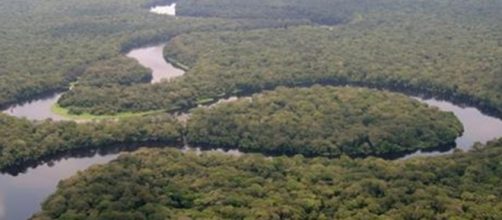United Nations(UN) Secretary General, Ban Ki-Moon said on the International Day for Preventing the Exploitation of the Environment in Armed Conflict, that waris the root of the “silent casualty”. The silent casualty is the environment.
A joint UNEP-MONUSCO report indicates that environmental crime in the Democratic Republic of Congo (DRC) keeps conflict alive in the region.
According to the report, up to 90% of the profits from the smuggling and exploitation of natural resources are pocketed by organized crime networks. It is big money, so these networks have no incentive to stop the ongoing conflict between the 25 different armed groups.
The DRC has an unfortunate and bloody history, but the devastation to the environment has been particularly damaging since the Congolese Civil Wars began in 1996. This war ended the rule of Mobutu Sese Seko who had been in power for 31 years. The war resulted in the death of over five million people.
The country has been known by a number of names over the years, which may dilute the understanding of the extent of the impact of civil unrest on the environment.
Global citizens may not be aware that the Belgian Congo, Zaire and the Congo Free State is a single country, now known as the Democratic Republic of Congo. The DRC is the eleventh largest country in the world and has massive natural resources.
During the rule of Mobutu, corruption became so widespread that Zairian Sickness became a term to refer to gross corruption and mismanagement.
In 1996, Rwandan soldiers who had been involved in the genocide of the Tutsi in their country fled to the DRC. Mobuto allowed his own soldiers to join them in a campaign against his own Congolese ethnic Tutsi' in the east.
Various rebel movements arose and war raged across the country. In January 2010, the New York Times reported that in 2009, “people in the Congo continued to die at a rate of an estimated 45,000 per month.”
Now there is tenuous peace in the country. Elections are due in 2016. Meanwhile, the five World Heritage Sites in the DRC are listed by UNESCO as being in danger. The bush meat crisis, which has arisen from a lack of socio-economic growth has seriously eroded the wildlife the country.
Bush meat is the description for meat taken from wild animals. Apart from snaring and trapping, arms from the military conflict are devastating wildlife.
The country is experiencing the silent forest syndrome in places. A health and safety officer with a mineral exploration company describes it as uncanny. “There are trees and rivers, but there are no animals. The silence is eerie. Hearing a bird call is cause for celebration,” she said.
The danger to the environment extends beyond the poverty-stricken survivors of the conflict who want to feed themselves. The corruption in the country has allowed the “Conflict Timber” trade to flourish. The vast forests are being systematically logged by syndicates who take advantage of the conflict for personal gain.
Illegal mining activity devastates the environment. BRS reported that in 2008 over 50% of the mines in the eastern DRC were controlled by armed groups. Mail & Guardian reported in February 2015, that, militia, the military, pit bosses, buyers and miners vie for the metal (gold) that's smuggled out of the Congo.
UNEP’s executive director, Achim Steiner has said that the competition to extract environmental resources is, "fueling violence and creating desperate conditions.”
There is a genuine desire to stop the problems in the DRC, but unless there is a free and fair election in 2016, nothing looks set to change. Even if there is a successful election, it will be the work of many years before the devastation can be halted.
SeaSeaWorld announce they will stop their San Diego orca trick-show.
Addressing the incomprehensible wildlife-poisoning crisis in Africa

